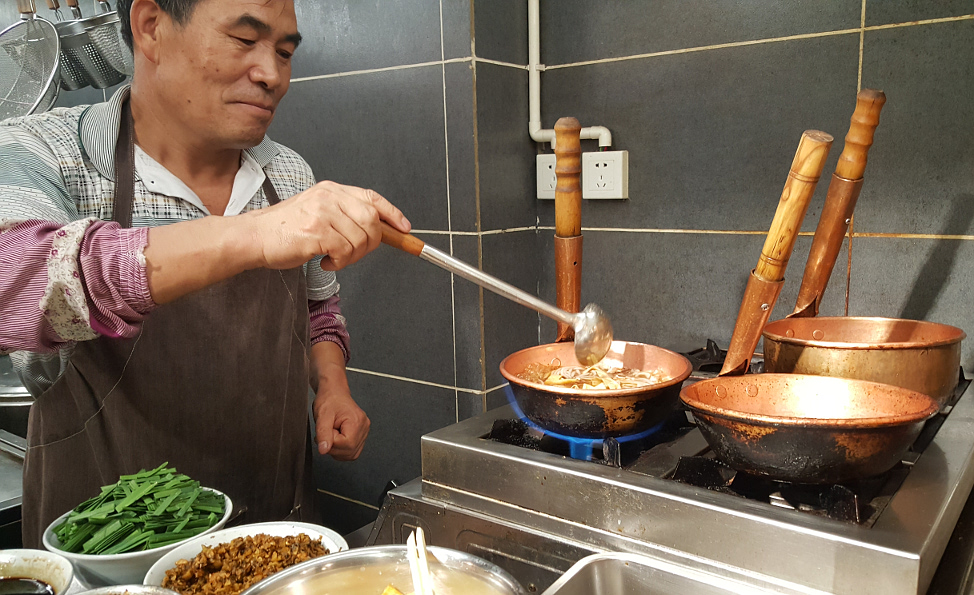Yunnanese cuisine on:
[Wikipedia]
[Google]
[Amazon]

 Yunnan cuisine, alternatively known as Dian cuisine, is an amalgam of the cuisines of the
Yunnan cuisine, alternatively known as Dian cuisine, is an amalgam of the cuisines of the

Han Chinese
The Han Chinese () or Han people (), are an East Asian ethnic group native to China. They constitute the world's largest ethnic group, making up about 18% of the global population and consisting of various subgroups speaking distinctiv ...
and other ethnic minority groups in Yunnan Province
Yunnan , () is a landlocked province in the southwest of the People's Republic of China. The province spans approximately and has a population of 48.3 million (as of 2018). The capital of the province is Kunming. The province borders the ...
in southwestern China
Southwest China () is a region in the south of the People's Republic of China.
Geography
Southwest China is a rugged and mountainous region, transitioning between the Tibetan Plateau to the west and the Chinese coastal hills (东南丘陵) and ...
. As the province with the largest number of ethnic minority groups, Yunnan cuisine is vastly varied, and it is difficult to make generalisations. Many Yunnan dishes are quite spicy, and mushrooms are featured prominently. Flowers, ferns, algae and insects may also be eaten. The cuisine of Yunnan is often compared to the cuisine of Southeast Asia
Southeast Asia, also spelled South East Asia and South-East Asia, and also known as Southeastern Asia, South-eastern Asia or SEA, is the geographical south-eastern region of Asia, consisting of the regions that are situated south of mainlan ...
as the province borders the region and many of the ethnic minorities or related cultural groups also have a presence in Southeast Asia.
Three of the province's most famous products are the renowned Pu'er tea
''Pu'er'' or ''pu-erh'' is a variety of fermented tea traditionally produced in Yunnan Province, China. In the context of traditional Chinese tea production terminology, fermentation refers to microbial fermentation (called 'wet piling'), an ...
, which was traditionally grown in Ning'er; Xuanwei ham
Xuanwei ham () is a dry-cured ham in Qujing Prefecture of Yunnan province, China. Xuanwei ham has a 250-year history dating back to 1766. In 1909 it was first mass-produced and gained popularity. In 1915 Xuanwei ham won a gold medal at Panama I ...
, which is often used to flavour stewed and braised foods in Chinese cuisine and for making the stocks and broths of many Chinese soups; and ''guoqiao'' (crossing the bridge), a rice noodle soup with chicken, pig's kidney and liver, fish and pickled pork.
Yunnan cuisine is unique in China for its cheeses like Rubing
Rubing () is a firm, acid-set, non-melting, fresh goat milk farmer cheese made in the Yunnan Province of China by people of the Bai and Sani (recognized as a branch of the Yi in China) minorities. Its Bai name is ''youdbap'', meaning "goat's m ...
and Rushan cheese made by the Bai people. Other influences include Mongolian influence during the Yuan dynasty
The Yuan dynasty (), officially the Great Yuan (; xng, , , literally "Great Yuan State"), was a Mongol-led imperial dynasty of China and a successor state to the Mongol Empire after its division. It was established by Kublai, the fift ...
(i.e. Central Asian settlement in Yunnan), and the proximity and influence of India and Tibet on Yunnan. Yunnan cuisine is gaining popularity in the west. Likening the food vlogger Dianxi Xiaoge to the Chinese documentary television series ''A Bite of China
''A Bite of China'' () is a Chinese documentary television series on the history and traditions of food, dining, and cooking in China directed by Chen Xiaoqing (), narrated by Li Lihong () with original music composed by Roc Chen (). It first a ...
'', Xinhua said Dianxi Xiaoge could be called ''A Bite of Yunnan'' in introducing Yunnan cuisine to the world.
Notable dishes
Characteristic features
Abundant ecological raw materials
Yunnan is located in the Yunnan-Guizhou plateau, with an extended range of mountains, plains, and lakes, forming a colorful scenery and three-dimensional climate of tropical, subtropical, temperate, and cold zones. This kind of diverse physiognomy and environment are beneficial to the growth of a variety of plants and animals. Yunnan is known as the "fungus kingdom," "plant kingdom," and "animal kingdom." It is one of the regions with the most abundant edible wild fungus resources in China. There are more than 250 kinds of edible native fungus, among which common ones are bovine liver fungus, Qingtou fungus, chicken fir fungus, dried fungus, bamboo sun fungus, matsutake fungus and so on.Unique cooking technique
The cooking technique is an essential factor in cooking dishes. Many flavor dishes are unique in cooking utensils, fire, taste, and color. Yunnan is a big province of ethnic minorities. The ancient cooking methods of 25 ethnic minorities are combining with the cooking techniques of the Han nationality, which makes the Yunnan cuisine taste and colorful. Both of the Han people's steaming, frying, sauté (with starch extract), pot-stewed, quick-boil, boiling, stewing, and the integration of minority baking, pestle, heat-contact, cure, stone cooking, salt cooking and other cooking methods. For example: Bamboo rice: Adding glutinous rice into bamboo to make bamboo rice with soft and glutinous fragrance. Pineapple rice: Pineapple purple rice made with hollowed pineapple with fragrant pineapple flavor. Steamed chicken: Steamed chicken made with Jianshui purple pottery special steam cooker with original flavor.See also
*List of Chinese dishes
This is a list of Chinese dishes in Chinese cuisine.
Dishes by ingredient
Grain-based dishes
Noodles
Rice
Pork-based dishes
Poultry-based dishes
Vegetable-based dishes
Dishes by cooking method
Dumplings
Pastry
Soups, stews an ...
* List of edible insects by country
References
{{DEFAULTSORT:Yunnan Cuisine Regional cuisines of China